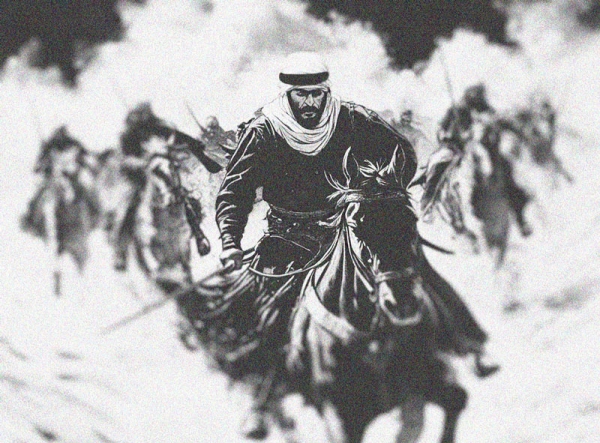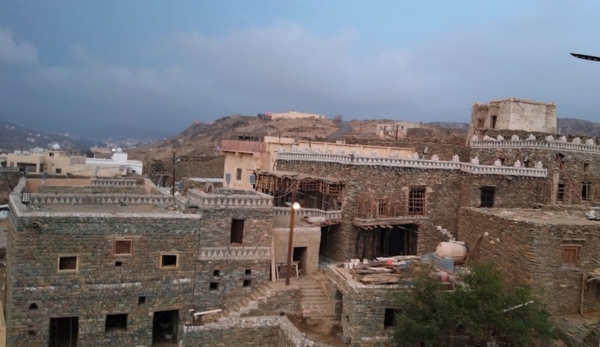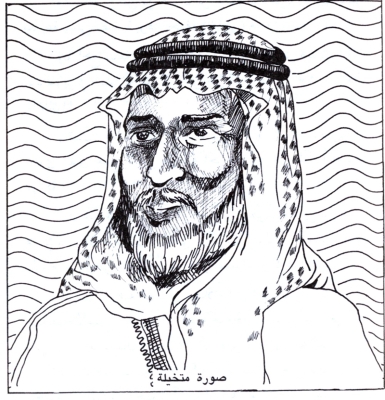

Bakhrush Bin Alas al-Zahrani (1757 - 1815) was the Governor of Bilad Ghamid and Zahran during the reign of the First Saudi State and one of its defenders in the nineteenth century.
Life of Bakhrush Bin Alas
Bakhrush Bin Alas was born in the village of al-Udayyah in 1757. He belonged to the Quraysh al-Hasan clan of Bani Omar, which is located in the northern part of Sarat Zahran and is one of the four branches of the Zahran tribe: Daws, Bani Omar, Bani Yus, and Bani Salim. Al-Udayyah is located north of al-Atawilah, about four miles away, and currently serves as its administrative center. It is considered the northern gateway to al-Bahah Province from Hejaz. Bakhrush had three sons: Alas, Aaidh, and Zaid.
Bakhrush Bin Alas was tall with a long face, a lean build, broad shoulders, and a commanding presence, with muscular arms. He had a firm personality and was well-regarded for his wisdom and counsel among his people. Additionally, he was recognized for his bravery, strength, sound judgment, and deep knowledge of tribal affairs.
Bakhrush Bin Alas' leadership of Bilad Zahran Emirate
After Bilad Zahran came under the rule of the First Saudi State in 1803, Bakhrush Bin Alas was appointed as the Governor of all Bilad Zahran, whereas his authority had previously been limited to his own Quraysh clan. His rule then extended over all the lands of Bani Omar in Sarat Zahran, encompassing the Bani Bashir, Bani Jundub, Bani Harir, Bani Adwan, and Quraysh tribes under his authority.
Participation of Bakhrush Bin Alas’ in the wars of the First Saudi State
Bakhrush Bin Alas led several battles during the First Saudi State and supported the Saudi army in Bisel, Turubah, Taif, al-Qunfudhah, and Nasirah. He resisted the forces of Mohammed Ali Pasha, which were sent to overthrow the First Saudi State. Bakhrush became a significant threat to Ottoman interests in the Hejaz, as Bilad Ghamid and Zahran were located on the southern borders of the Hejaz. These tribes were able to engage the Ottoman forces, delaying the fall of the First Saudi State to Mohammad Ali Pasha’s troops, whose first contingents arrived in Yanbu in 1811.
Among the battles in which Bakhrush Bin Alas participated was the Battle of al-Qunfudhah in 1814, alongside the Governor of Aseer, Tami Bin Shu‘ayb. Together, they managed to defeat the invading forces and seize a significant amount of spoils.
Bakhrush Bin Alas led operations to disrupt the Ottoman supply lines between Makkah al-Mukarramah and Jeddah, targeting moving convoys, fortified defenses, and strong fortifications. He also resorted to economic warfare by cutting off supplies.
In September 1814, Mohammad Ali Pasha assembled an army that marched from Makkah al-Mukarramah and Taif to besiege Bakhrush Bin Alas in Wadi Quraysh Village in Zahran. The battle began in 1814. With support from the Governor of Aseer, Tami Bin Shu‘ayb, Bakhrush executed a pincer-break maneuver, in which forces descended from the mountain tops and attacked the Ottoman troops, who were in a defensive position. The battle resulted in a decisive victory for Bakhrush, forcing the enemy troops into retreat.
Bakhrush Bin Alas achieved victory over the Ottoman forces in the Battle of Nasirah Bilharith, defeating the invaders who had launched an attack on Bilad Ghamid, Zahran, and Aseer.
He fought alongside Saudi forces led by Faisal Bin Saud in the Battle of Bisel, near Taif, in 1815.
Death of Bakhrush Bin Alas
After a series of battles marked by advances and retreats, Bakhrush Bin Alas was captured during the Second Battle of Quraysh al-Hasan in 1815. He attempted to escape but failed. He was killed on March 31, 1815, and his head was sent to Istanbul.
Related quizzes
Related articles


